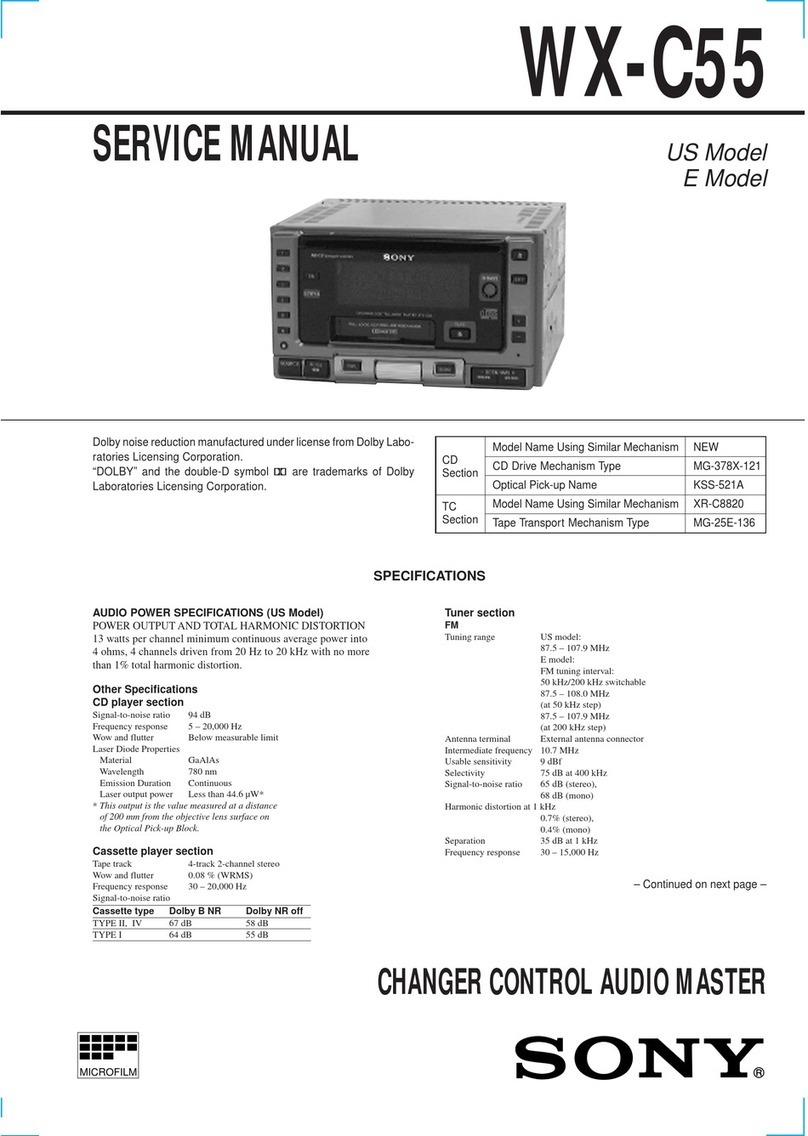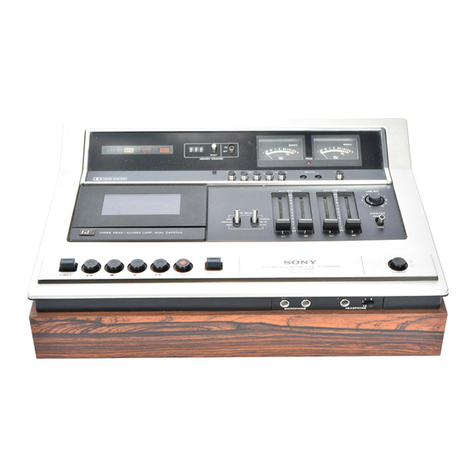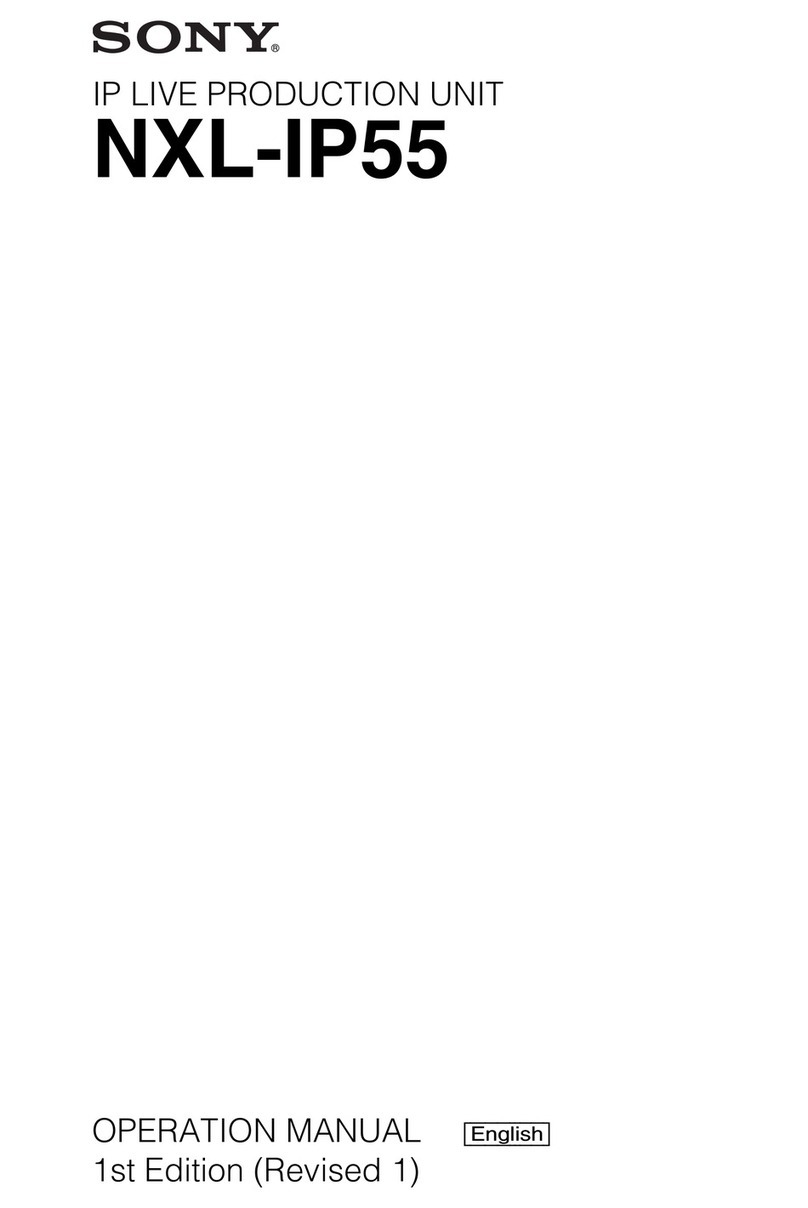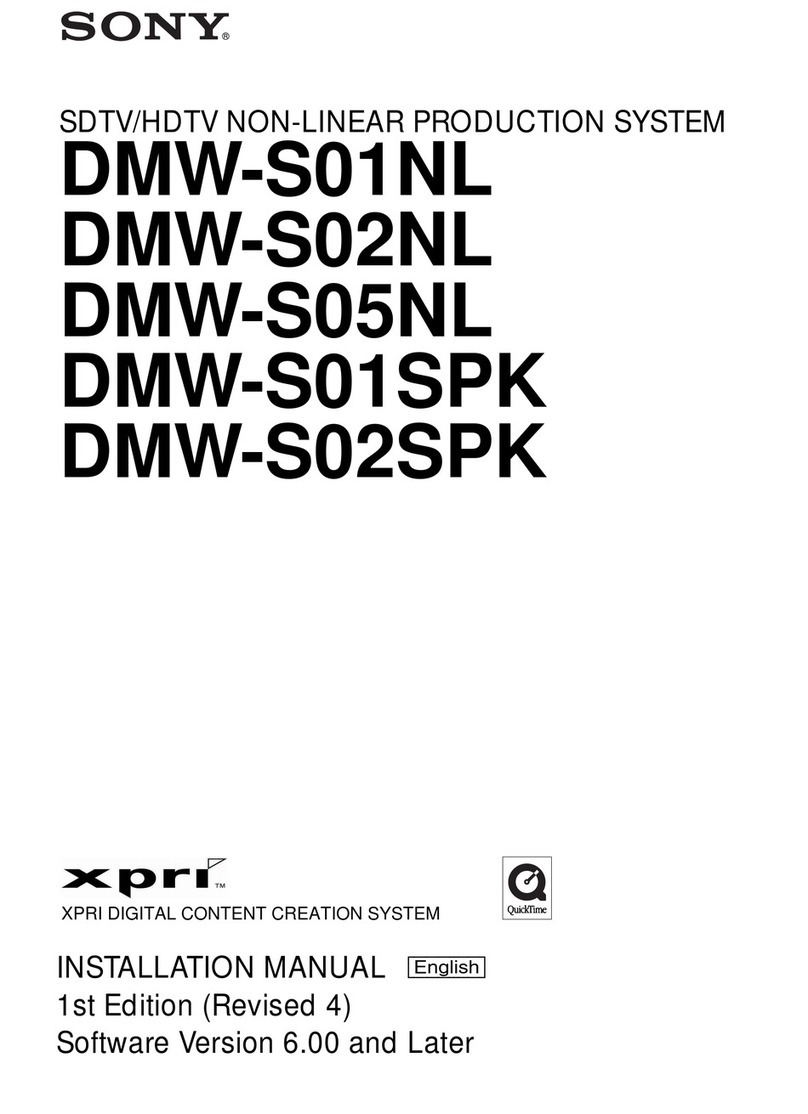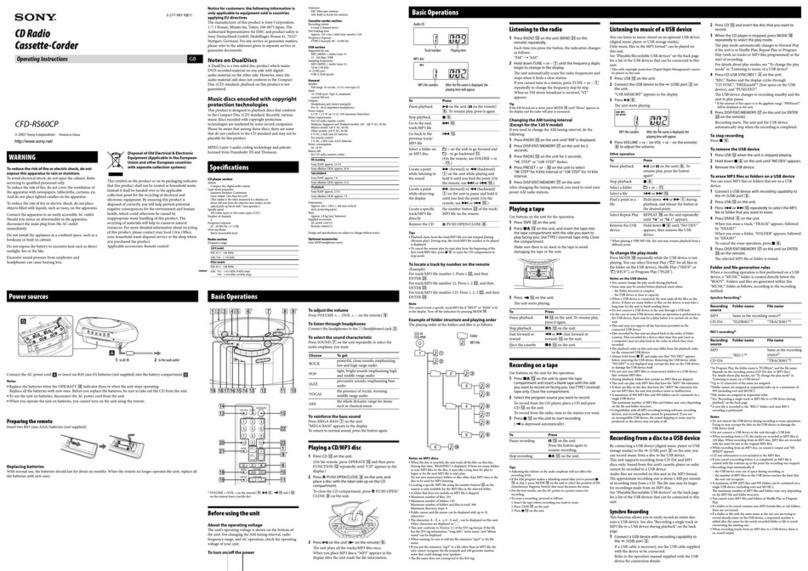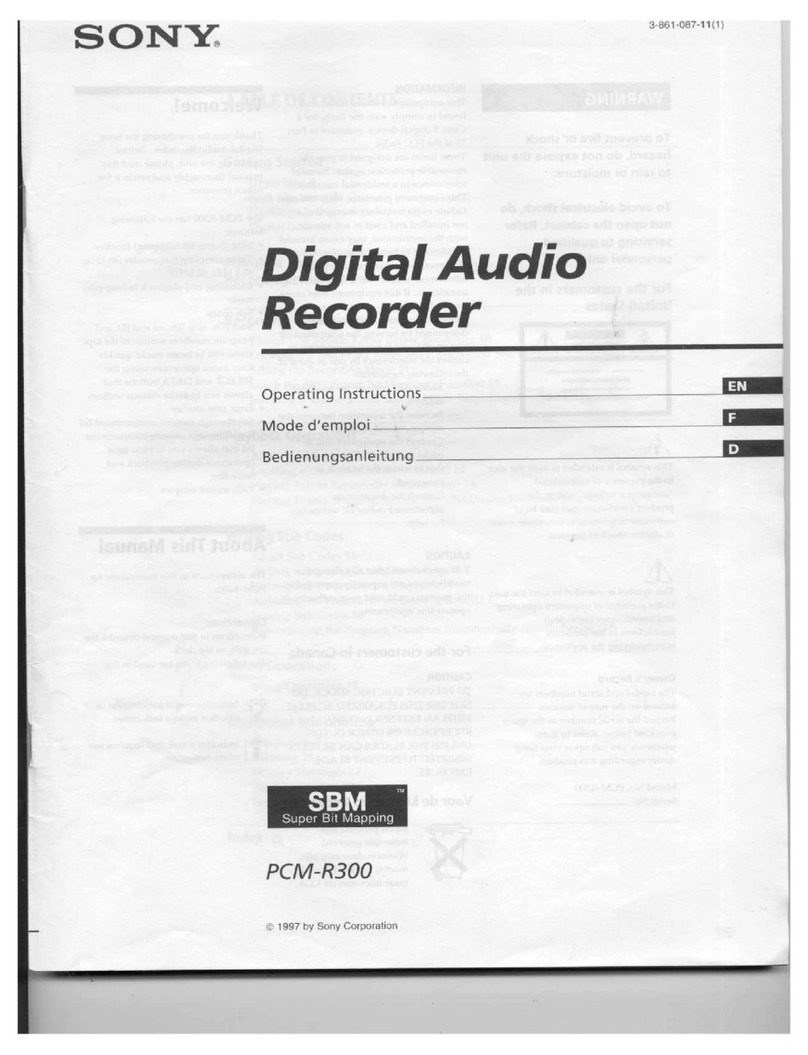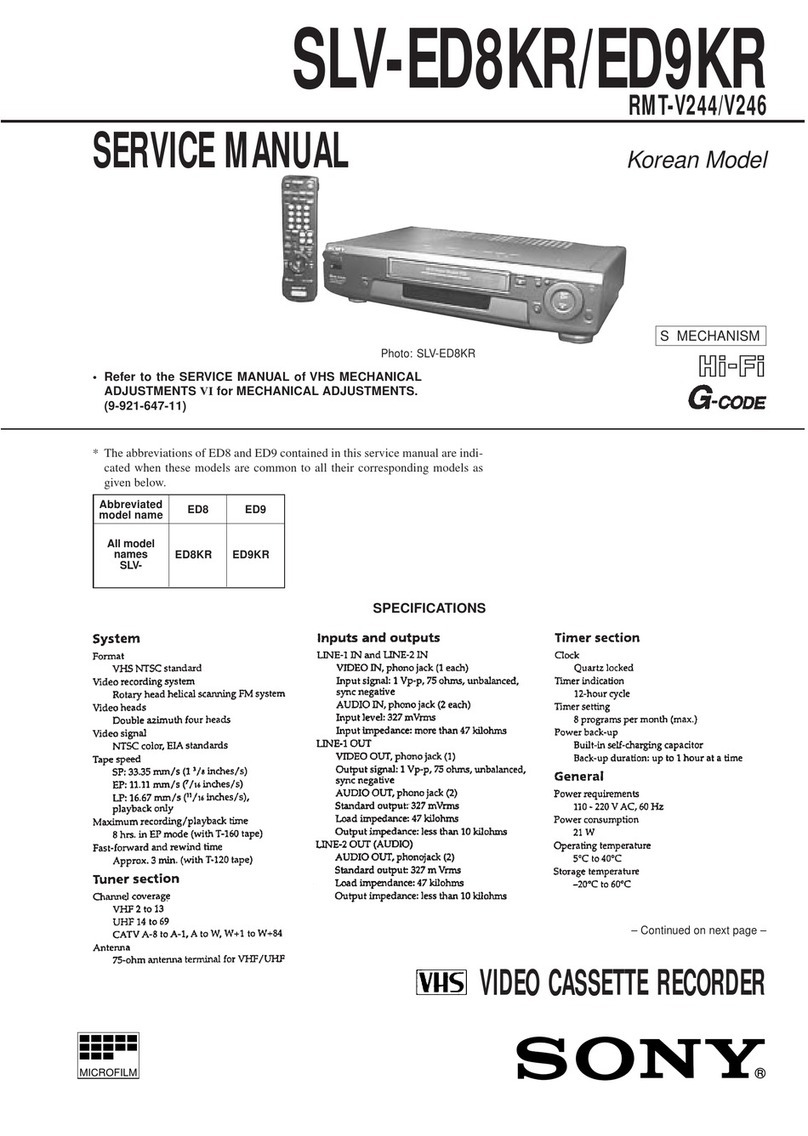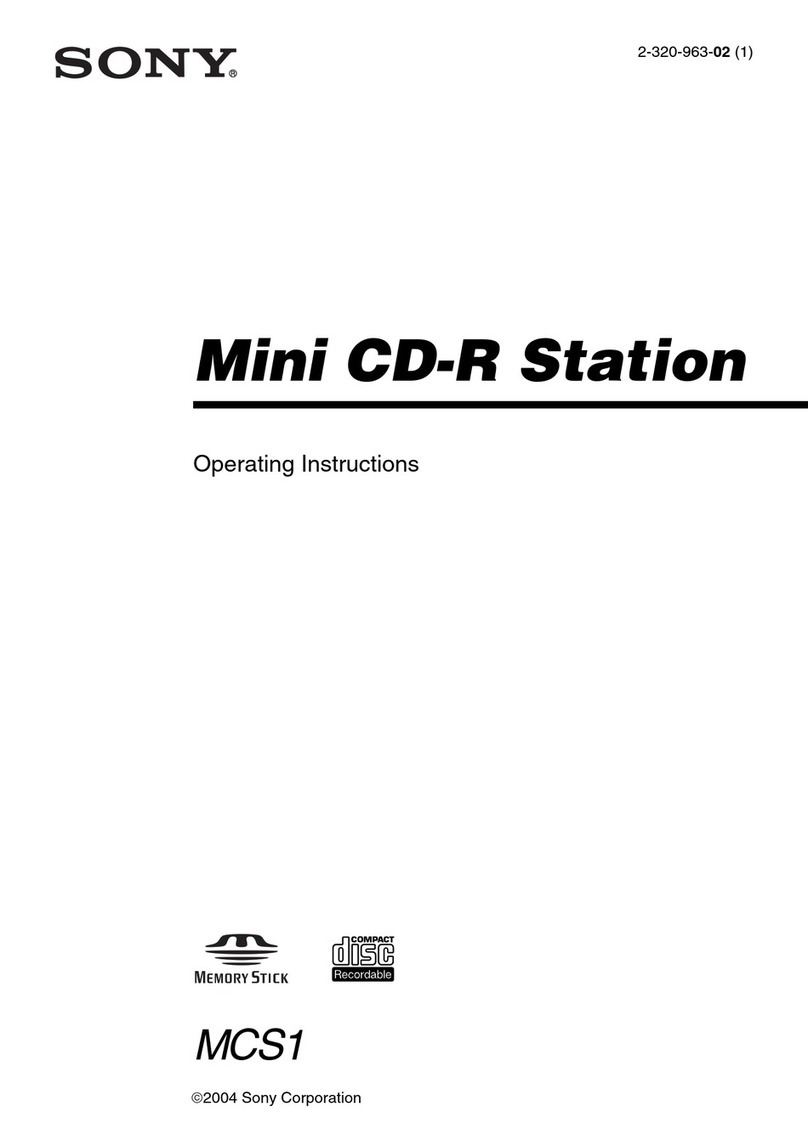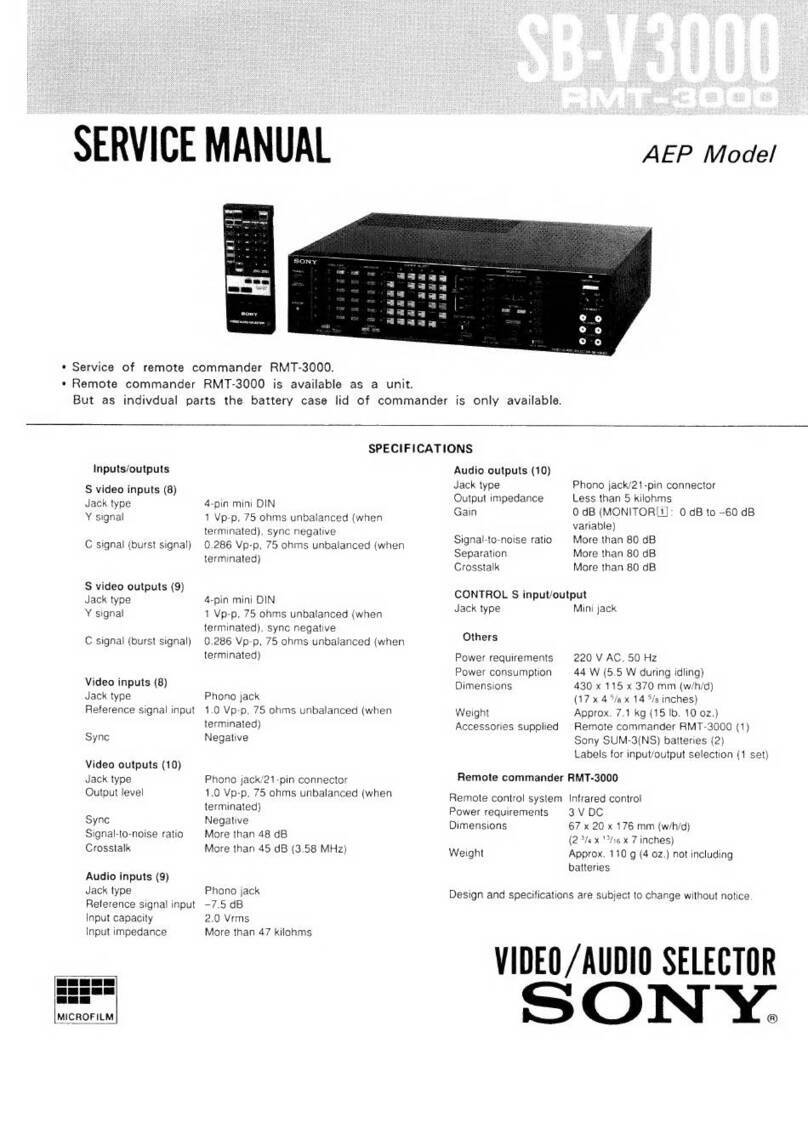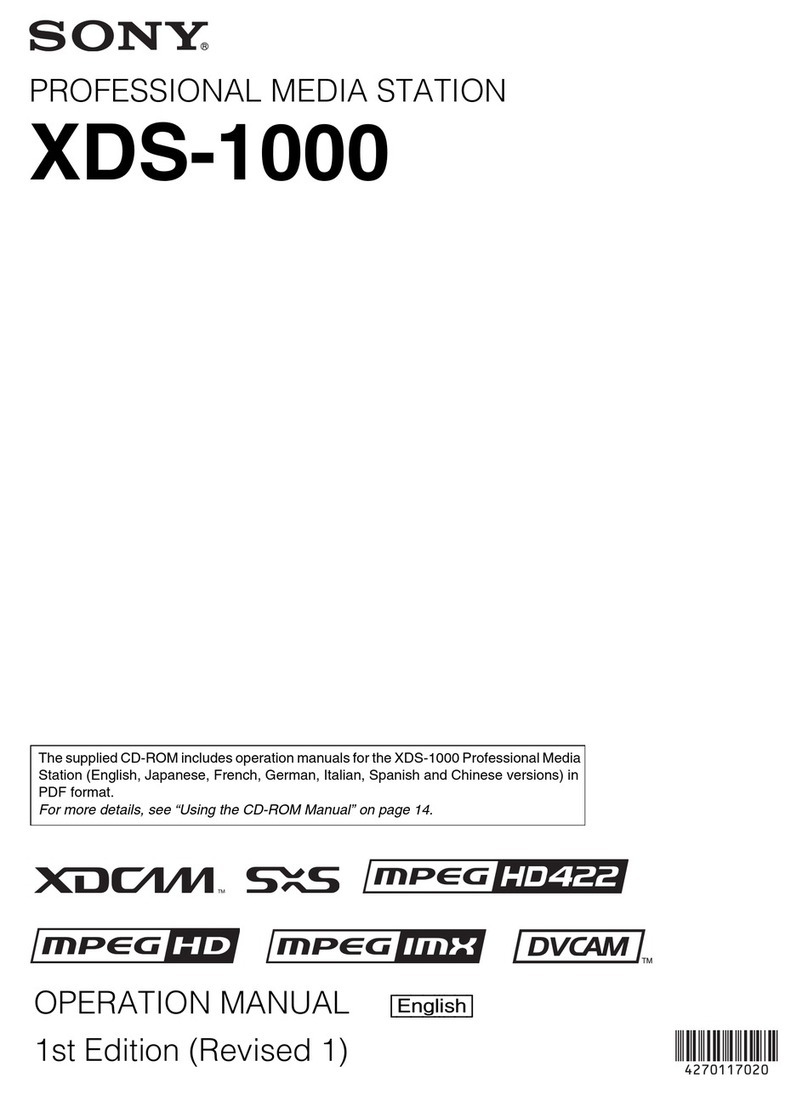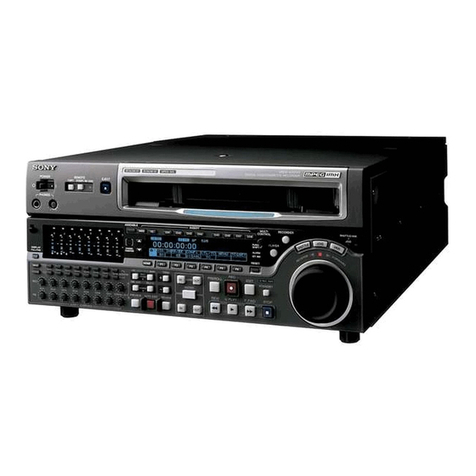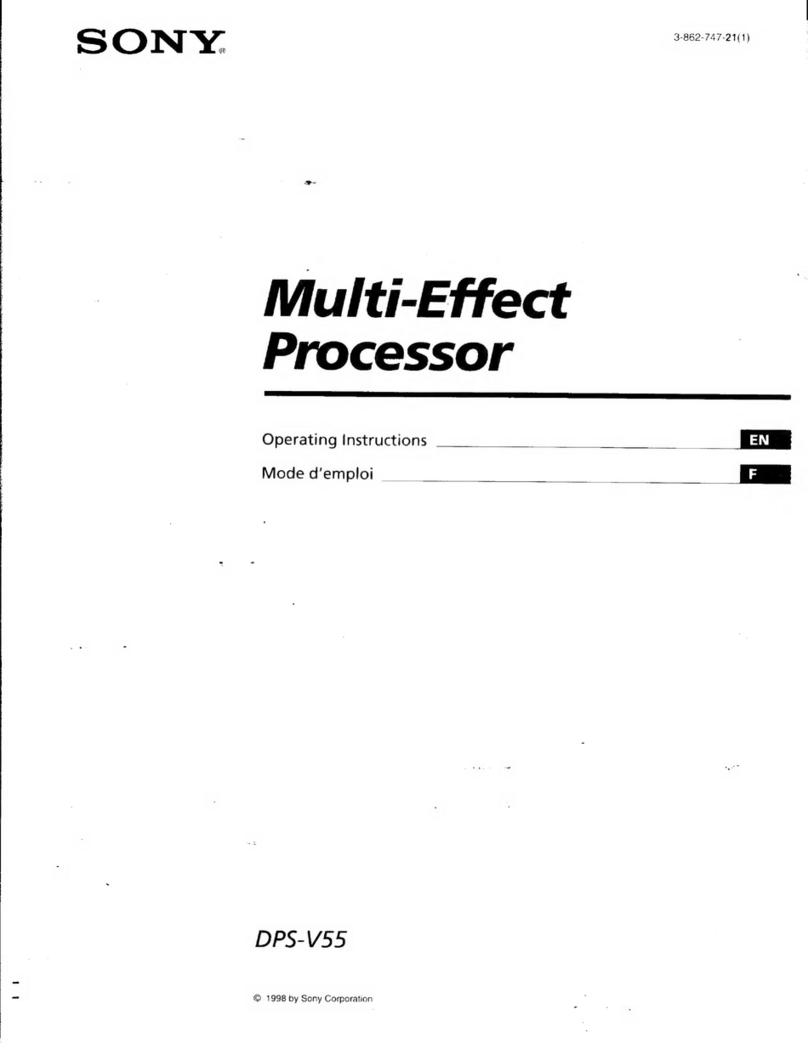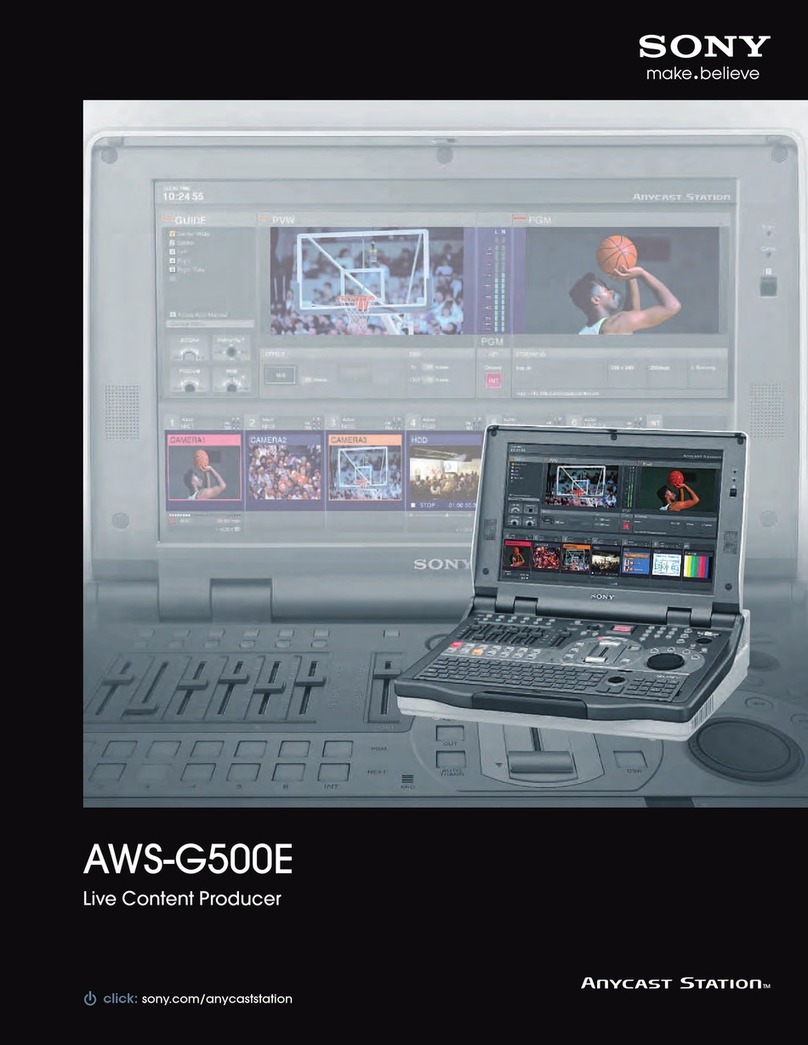
Chapter 1 Overview
7
1-1 Features
Timer Rec
(with HKSR-102 installed)
When the HKSR-102 Picture Cache Board is installed, a
Timer Rec function is available on this unit. This allows
you to utilize the memory in the option board to shoot
images at a specified interval. This enables time-lapse
recording and recording over long periods.
Cache Rec
(with HKSR-102 installed)
When the HKSR-102 Picture Cache Board is installed, a
Cache Rec function is available on this unit. This function
captures about 100 frames of the video and audio that the
camera is currently shooting (or about 200 frames in 50P
or 59P mode) to the memory in the option board. Thus,
when you press the recording start button (in standby on
mode), the recording starts with the data stored several
seconds before.
Monitor format conversions
This unit is capable of the following format conversions
for output to monitors.
• Color space conversion (RGB 4:4:4 tYCbCr 4:2:2)
• 2-3 pulldown (4:2:2 23.98PsF t4:2:2 59.94i)
• Downconverter (1080i tSD 525i/625i)
• Dual link Pti conversion (1080 59.94P/50P t2-line
linearly interpolated 1080 59.94i/50i)
When the RGB 4:4:4 format is selected, lookup tables
(LUT files) can be used to convert to 4:2:2 monitor output.
Versatile operating styles
Connected to the SRPC-1
This unit can be combined with the SRPC-1 to meet the
diverse I/O interface requirements of production
environments. Video signals can be input and output as
HD SDI or as Dual Link HD SDI. Monitor output of both
HD SDI and SD SDI is supported.
It is possible to record 12 audio channels selected from a
total of 20 channels which consists of 4 analog audio
channels, two sets of 4-channel AES/EBU audio, and 12
HD SDI channels.
The SRW-1 supports the SMPTE-291M/292M/296M/
299M/372M HD SDI standards.
Docked on the F23
This unit features a dockable interface that connected
directly to the F23 on either the top or rear panels, as
convenient.
When this unit is docked on the F23 with installation of the
optional HKSR-102 board on a docked SRW-1 enables
recording of smooth slow and quick motion in full high-
definition video (Select FPS function of SR Motion
function). Installation of the optional HKSR-103 board in
addition to the HKSR-102 board enables RGB 4:4:4
recording at 1080/60P (playback is 24P, 25P, and 30P).
Transmission over optical-fiber cable
(with optional HKSR-101 installed)
When the optional HKSR-101 Optical Interface Unit is
installed, this unit can be connected to an HDC-F950 HD
Color Video Camera or an ARRI D-20 camera by optical-
fiber cable.
A single optical-fiber cable can receive HD 4:2:2
component video signals or HD 4:4:4 RGB video signals,
while simultaneously transmitting HD 4:2:2 component
video return signals to the camera. Audio signals and
control signals are multiplexed into video signals
transmitted over optical-fiber cable.
Note
Power cannot be supplied to a camera from this unit by
optical-fiber cable.
As player during video editing
This unit is equipped with an RS-422 remote control
interface. During video editing, you can use this unit as a
player in combination with a high-definition recorder VTR
(such as the SRW-5000/5500).
Removable control panel
The control panel is independent of the SRW-1 (VTR main
unit), allowing it to be installed in the most convenient
location in your operating environment. It can be held in
the hand and operated like a remote controller.
Other features
Internal timecode generator and reader
The internal timecode generator allows you to record
timecode (LTC, VITC, and user bit data) along with the
video and audio signals. The internal timecode reader
reads the recorded timecode (LTC ,VITC, and user bit
data) during playback.
Independent audio level adjustment
You can adjust audio levels independently while checking
peaks on all 12 audio channels.
Self diagnostics
When an error occurs, the system performs self diagnostics
and displays the cause.
HDCAM-SR format
The HDCAM-SR format exploits advances in signal
processing and magnetic recording technology to enable
HD digital recording and playback with high image and
sound quality, with functionality comparable to that of the
HDCAM format.
• Highly efficient mild data compression based on the new
MPEG-4 Studio Profile
• Powerful error correction system

